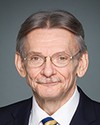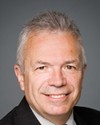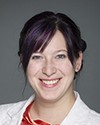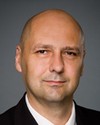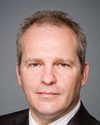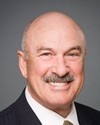Thank you, sir.
Mr. Chair, members of the committee, thank you for this opportunity to provide you with a briefing on the army doctrine and training system.
I am Major-General Steve Bowes, commander of the land force doctrine and training system at Canadian Forces Base Kingston.
As you saw during your recent visit to the Canadian Manoeuvre Training Centre, we go to great lengths to ensure that our soldiers are trained in a realistic way to prepare them for the challenges of operations. Doctrine and lessons learned provide the underpinning for effective training. Doctrine is a word that is often misunderstood, but in essence it means a common understanding of the nature of land warfare, and thus a consistent approach to how we solve tactical problems.
This approach is grounded in theory, history, and the experience gained in fighting Canada's wars. But it is also informed by the latest lessons we have learned from operations. Before you are four slides providing a broad view of the Canadian army's doctrine and training system. I would like to walk you through this quick briefing, after which I would be pleased to answer your questions.
Slide 1 is on the army training continuum.
Army training follows a well-defined methodology, the army systems approach to training, and that in itself is nested in the Canadian Forces system approach to training, which ensures the most effective and efficient training possible. This methodology is applied in a pyramid training paradigm that starts with a broad base of institutional training, layered by a central core of foundation training, followed by a regime of high readiness training for specific units and, finally, topped off by mission-specific training.
Throughout all levels of training, from individual to collective, the army's soldiers and officers are provided with ample opportunity for professional development in the form of general education, trades specific training, language training, and ethics, to name a few. The system of army training produces quality individuals and formed units capable of carrying out missions and tasks across a broad spectrum of employment, ranging from domestic and expeditionary response, to natural or man-made disasters, peace support operations, stability operations, support for failed or failing states, and through to the higher end of full spectrum operations.
Army training must be general enough in nature to cover the full gamut of tasks and missions Canadians expect its army to be able to carry out in times of need. Army training is based on the Canada First defence strategy that prioritizes at-home requirements over those of an expeditionary nature. The reserve component of the army is heavily involved in training for likely domestic tasks, as reservists are well suited to respond locally given that they are embedded in communities across the country. In more northern communities, the Canadian Rangers play a similar and equally vital role. The regular component of the army, while often employed domestically, focuses much of its training on preparing for expeditionary operations. The flexible nature of army training has allowed us to transition effectively from a combat to a training role in Afghanistan.
Turning to slide 2, the army's doctrine is the intellectual foundation upon which all of our training and professional development is built. Doctrine is defined as the formal and authoritative expression of military knowledge and thought that the army accepts as being relevant at any given time, covering the nature of conflict, the preparation of the army for conflicts, and the method of engaging in them to achieve success.
The army's approach to doctrine development is achieved through a process of five phases: analysis, development, production, approval, and validation. This process ensures that we continuously adapt to maximize our effectiveness in a given situation, while respecting the understanding of the nature of conflict that we have developed as an institution over many years. We must continuously monitor and analyze changes in our operating environment, including technological developments, deficiencies identified during operations, and the experience of allied nations, in order to determine whether our doctrine may need to be adapted or reconsidered.
Once a problem is identified, the development phase determines how best to achieve a solution. Options will be developed, informed by research, experimentation, discussion, debate, and war gaming. Allied and joint approaches, as well as professional journals and research papers, can be used to broaden the examination.
Once we have decided on a resolution, we enter the production phase, which covers the processes required to draft, comment, publish and disseminate army doctrine, including any additional debate and experimentation. The army commander and I are the approving authorities for publishing and disseminating doctrine. Doctrine approval briefs are provided to governance forums, such as the army council, prior to dissemination.
The validation phase is really a continuous activity whereby we assess the relevance, accuracy, and currency of doctrine, whether from lessons learned or from issues raised by the schools or observed during training activities. The validation phase can also drive doctrinal changes and thus overlaps with the analysis phase in what is really a continuous cycle of doctrine development.
We'll now consider the army learning process.
The army learning process ensures that the Canadian Army collects, analyzes, and assimilates the experience that we have gained from operations, in order to continuously improve our performance and to keep ahead of an adaptive adversary.
The reporting process starts with the observations and insights of our personnel on operations, whether in Canada or overseas. These observations can be submitted directly, as a result of an after-action review, but frequently they are collected by embedded lessons liaison teams. The army commander's critical topic list also provides direction and focus to the collection and priority efforts.
After an initial analysis, observations are prioritized based on their relevance and importance. Those designated as key lessons identified—that is, those that relate to an urgent operational problem, require acquisition of new equipment, or involve a significant re-evaluation of existing doctrine—are moved forward for detailed analysis.
Responsibility for each key lesson identified is determined by the army learning working group. Subject matter experts then analyze and validate the observation and recommend solutions to address the issue.
The observation and recommended plan of action is then briefed to the appropriate authority and their decisions and direction are tracked by the army lessons-learned centre. The director of the army lessons-learned centre periodically reports to army senior leadership on the progress of these key lessons identified. The director of land staff ensures that Canadian Forces agencies outside the army, as well as other government departments, are kept apprised of issues that are relevant to them.
Once the commander of the army has concurred with the direction issued by the line of governance, the director of army doctrine and the centres of excellence implement the necessary changes, and the army lessons-learned centre uses a variety of communication methods to ensure that the changes are understood by all the units and soldiers.
The Canadian army can be justifiably proud of its record in the Afghanistan combat operation, but we are well aware that the skills we developed at great cost are perishable. The challenge for army training is to sustain the successes we have achieved while continuing to adapt to the changing environment. We also need to work on some of the deficiencies we have identified—and, regrettably, we will need to allow a few mission-specific skills to degrade gracefully.
Our focus needs to remain on training combat-effective, medium-weight forces that can adapt to any task. The experiences in Afghanistan have validated some of the central concepts of our doctrine. The all-arms battle group remains the core of our capability. It delivers effects on the ground throughout the spectrum of operations, from humanitarian assistance all the way to full-scale combat. The brigade group headquarters, forming the nucleus of a task force headquarters, provides the essential link that plans and synchronizes operations, sustains the force, and integrates the enormous range of capabilities available in a coalition context, including satellite imagery, air power, unmanned aerial vehicles, long-range fire support, civil-military cooperation, medical evacuation, etc. We need to continue generating confident and well-trained battle groups and brigade headquarters to meet the requirements laid out in the Canada First defence strategy. Our managed readiness plan will ensure that high-readiness forces receive the right amount of training at the right time, while disciplining the natural desire of commanders to expand the training envelope.
All of this rests on the quality of our people. We need to continue to provide individual training that prepares soldiers for operations in complex environments based on the hard-won lessons we have learned. Above all, we need to continue developing outstanding leaders.
I'd like to highlight a few of the specific successes we need to sustain and build upon. In a few short years, we have developed a superb level of integration and cooperation with our colleagues, the airmen and airwomen of the Royal Canadian Air Force, and I know that the air force leadership is as committed as we are to keeping this flame alive. We have also made huge strides in building mutual respect between the regular and reserve components of the army. The implementation of common training standards for regular and reserve soldiers means that we can continue to incorporate reserve personnel into high-readiness forces with full confidence that they will perform to the same level as their regular-force counterparts, although in a narrower range of tasks without high-readiness training.
In the near term, there are a few areas where we need to catch up. The focus on counter-insurgency operations in Afghanistan has inevitably led to a reduction in the time available to train in the fundamentals of combat operations. Our exercises, starting with Exercise Maple Resolve 2011, will include a near-peer adversary capable of armoured manoeuvre, while retaining the challenges of a complex, heavily populated battle space and the integration of allied forces. We will also be placing more emphasis on medium-intensity combat operations at the army staff college course and on other professional development activities.
Finally, there are two longer-term training challenges that I would like to highlight. Having gone through a very intense period of activity, we are entering a stretch of time when there is no immediate prospect of another major operation. This could change very quickly, but for our soldiers there is a risk that they might want to seek other challenges if we don't keep them engaged.
The army commander has coined a phrase, “train to excite”. This means there will be an increased emphasis on training in Arctic and jungle operations, mountain warfare, and littoral operations, as well as in parachute and air mobile operations. Some might find the word “excite” hard to square with the prospect of slogging through the jungles of Brazil, but this is the sort of professional and personal challenge that will keep soldiers interested and motivated.
The other challenge to the training system is to sustain the adaptive culture that has served us well over the last few years. We need to continue to incorporate lessons learned into our training in a rapid and efficient way. But we also need to exploit emerging technology, particularly within the realm of simulation, to make our training not just more efficient but also more effective.
I hope this brief outline has provided you with a better understanding of how we train Canada's soldiers. Our soldiers are our most valuable resource. Well-trained, they can be prepared to meet any challenges in Canada and to go anywhere in the world to represent Canadians and our values.
I'm ready to answer any questions you may have.
Thank you, sir.


